Sports
Top: 10 Most Hardest Sports in the World

Top 10 Most Hardest Sports in the World
Welcome to our guide on the top 10 most hardest sports in the world! Whether you’re a sports enthusiast looking to learn about new sports, brush up on some rules, or settle an argument in the pub, you’ve come to the right place.
In this article, we’ll explore the basic rules of various sports in a simple and easy-to-understand way.
1. Ice Hockey

Ice hockey, renowned for its exhilarating and fast-paced nature, rightfully claims the top spot on our list of demanding sports due to its unique blend of physicality and skill.
In this dynamic game, players are required to showcase exceptional skating abilities, agility, and endurance as they navigate the icy surface and fiercely compete for control of the puck.
At the core of ice hockey lies the demand for exceptional skating skills.
Players must seamlessly glide across the ice, exhibiting both speed and precision in their movements. The ability to swiftly change direction, accelerate, and decelerate is crucial, adding an element of finesse to the intense physicality of the game.
Agility becomes a defining attribute in ice hockey, as players navigate the rink, weaving through opponents, and swiftly changing tactics on the fly.
The dynamic nature of the game demands quick reflexes and the capacity to pivot between offensive and defensive roles, contributing to the strategic complexity that sets ice hockey apart.
Endurance is a non-negotiable requirement in ice hockey. The game unfolds over three periods, each filled with intense bursts of activity, rapid shifts in play, and constant physical exertion.
Players must maintain a high level of stamina to sustain their performance throughout the duration of the match, making cardiovascular fitness a key component of success.
Competing for the puck adds a layer of physicality to ice hockey, as players engage in body checks, stick battles, and strategic positioning to gain control.
The sport demands strength, balance, and resilience, with players often contending with the physical challenges imposed by opponents and the unforgiving boards that enclose the rink.
2. Rugby

Rugby, celebrated for its unyielding physicality, demands a unique blend of attributes that encompass strength, speed, and strategic acumen. This dynamic sport stands as a testament to the intricate balance between raw physical prowess and astute tactical thinking.
In the arena of rugby, participants find themselves navigating a challenging landscape that necessitates not only exceptional athletic abilities but also a keen understanding of the game’s strategic intricacies.
At its core, rugby is a true test of an athlete’s mettle, demanding mental resilience and physical fortitude in equal measure.
The collision of bodies on the field underscores the relentless nature of the game, requiring players to not only endure the rigorous physical challenges but also to anticipate and react strategically to the ever-evolving dynamics of the match.
In the pursuit of success on the rugby pitch, individuals must cultivate a unique synergy between mind and body. The sport serves as a platform where mental toughness is as crucial as physical strength. Strategic thinking becomes a game-changer, influencing every pass, tackle, and decision made on the field.
Rugby players are not just athletes; they are thinkers, adapting to the unpredictable nature of the game with each passing moment.
As enthusiasts engage with the exhilarating world of rugby, they are drawn into a realm where the fusion of strength, speed, and tactical brilliance creates a riveting spectacle.
Whether it’s the thunderous collisions, the lightning-fast sprints, or the calculated maneuvers that unfold throughout the game, rugby captivates audiences by showcasing the multidimensional excellence required for success.
3. Boxing

Boxing, as a combat sport, stands as a testament to the profound demands it places on its practitioners—calling for exceptional discipline, unwavering endurance, and a mastery of skill that transcends the boundaries of physical prowess.
It is a sport that resonates with the essence of grit and determination, pushing fighters to their limits both mentally and physically. At its core, boxing is a symphony of discipline, requiring athletes to adhere to rigorous training regimens that sculpt not only their bodies but also their minds.
The discipline instilled in boxers is a driving force behind their ability to withstand the challenges of the sport, be it in the ring or during the demanding training sessions that precede each bout.
Endurance emerges as a cornerstone of success in boxing, as fighters must navigate rounds of intense physical exertion while maintaining mental clarity. The ability to endure is not merely about physical stamina but extends to the mental fortitude required to weather the storm of a match and persevere in the face of adversity.
Skill, perhaps the most revered aspect of a boxer’s repertoire, encompasses a multifaceted proficiency that spans offensive and defensive techniques.
Boxing demands a mastery of footwork, precision in striking, and a deep understanding of timing and distance. The finesse with which a boxer executes these skills can be the defining factor in the ring.
Strategizing in the heat of combat is a distinctive challenge in boxing. Fighters must not only read their opponents with acuity but also adjust their tactics on the fly.
The sport becomes a dynamic chess match, with split-second decisions determining the outcome. Quick reactions, adaptability, and the ability to think strategically under pressure are hallmarks of a successful boxer.
Enduring physical punishment is an inevitable facet of boxing, and the ability to withstand and recover from such punishment is a measure of a fighter’s resilience.
This aspect of the sport adds an element of human drama, emphasizing the indomitable spirit that propels fighters to continue despite the challenges they may face in the ring.
4. Gymnastics

Gymnastics, a captivating and artistic sport, seamlessly blends strength, flexibility, and grace into a mesmerizing display of athletic prowess. Athletes in this discipline embark on a journey that requires not only physical prowess but also a deep understanding of the harmonious interplay between strength, flexibility, and grace.
At its essence, gymnastics is a celebration of strength, where athletes sculpt their bodies into finely tuned machines capable of executing awe-inspiring feats.
The controlled power exhibited in every movement, from dynamic vaults to gravity-defying flips, highlights the fusion of raw strength with the precision required to navigate the intricacies of each routine.
Flexibility emerges as a cornerstone of gymnastic excellence, as athletes contort their bodies with seemingly effortless fluidity.
The ability to achieve and maintain a wide range of motion is not only aesthetically pleasing but also essential for executing the acrobatic elements that define gymnastic routines.
This flexibility is not merely a display of physical dexterity but also a testament to the rigorous training and dedication invested by gymnasts to attain such levels of suppleness.
Grace, the third pillar of gymnastics, elevates the sport to an art form. Athletes move with an elegance that transforms each routine into a visual symphony.
The marriage of strength and flexibility is showcased in a delicate dance that demands not only technical precision but also a keen sense of artistry. The grace exhibited by gymnasts adds a layer of sophistication to their performances, transcending mere physical prowess.
In the world of gymnastics, athletes navigate a series of apparatus, each presenting unique challenges that require agility, balance, and precision.
Whether it’s the soaring heights of the uneven bars, the dynamic floor exercises, or the poised balance beam, gymnasts demonstrate an unparalleled mastery of their bodies, executing routines that captivate audiences with a combination of athletic skill and artistic expression.
5. Formula 1 Racing

Formula 1 racing, a pinnacle of motorsport, places extraordinary demands on drivers, necessitating a unique blend of exceptional driving skills, lightning-fast reflexes, and the capacity to endure the punishing effects of high G-forces.
This high-stakes sport not only showcases the speed and precision of cutting-edge technology but also underscores the incredible athleticism and mental fortitude required of its drivers.
At the heart of Formula 1 lies the requirement for drivers to possess unparalleled driving skills. The ability to navigate complex tracks at blistering speeds, maneuver through challenging corners, and execute precise overtakes defines the skill set of a successful Formula 1 driver.
The sport demands a mastery of vehicle dynamics, aerodynamics, and tire management, making each race a dynamic chess match where split-second decisions can determine victory or defeat.
Lightning-fast reflexes are a non-negotiable aspect of Formula 1 racing. Drivers must react swiftly to changing conditions, sudden maneuvers, and unexpected challenges on the track.
The high-speed nature of the sport demands a level of responsiveness that goes beyond the ordinary, with drivers making decisions in fractions of a second to maintain control and optimize performance.
The physical toll of Formula 1 racing is evident in the ability of drivers to withstand high G-forces. Acceleration, deceleration, and cornering subject drivers to forces that can exceed the limits of human endurance.
Maintaining focus and control under these conditions requires not only physical strength but also the mental resilience to endure the physical strain throughout the entirety of a race.
In addition to the physical demands, Formula 1 is a mental battleground where drivers must exhibit endurance in the face of intense concentration and strategic decision-making.
Races unfold over extended periods, and the mental stamina to remain focused and make critical decisions under extreme pressure is a defining trait of successful drivers.
6. Wrestling

Wrestling, a combat sport of ancient origins, serves as a rigorous crucible where athletes are tested not only in terms of raw strength and technical prowess but also in their mental fortitude.
This physically demanding discipline places participants in a relentless face-off, where the fusion of strength, technique, and mental toughness becomes the cornerstone of success.
At its core, wrestling is a manifestation of sheer strength, where athletes engage in a dynamic interplay of force and resistance.
The sport demands a robust physical foundation, with competitors striving to overpower and outmaneuver their opponents through displays of raw power. The relentless grappling and physicality of wrestling underscore the importance of strength as a fundamental attribute.
Technical proficiency stands as an equally crucial aspect of wrestling, transcending mere physicality. Athletes must master an array of holds, escapes, and takedowns, creating a dynamic chess match on the mat.
Precision in execution, coupled with an understanding of body mechanics, distinguishes elite wrestlers and elevates the sport beyond sheer force.
Mental toughness emerges as a defining trait in the world of wrestling. The sport’s intensity requires athletes to endure physical discomfort, maintain focus in the face of adversity, and persevere through the grueling challenges of a match.
Wrestling tests an athlete’s ability to stay composed under pressure, fostering mental resilience that goes hand-in-hand with the physical demands of the sport.
Strategic thinking and quick decision-making play pivotal roles in the fast-paced nature of wrestling. Athletes must assess their opponents, adapt to evolving situations on the mat, and make split-second decisions that can determine the outcome of a match.
Wrestling is not only a test of physical prowess but also a mental chess game where strategic acumen is as vital as physical strength.
7. CrossFit

CrossFit, a dynamic and high-intensity fitness program, stands as a testament to the fusion of various exercises and disciplines designed to challenge athletes holistically.
This fitness phenomenon invites individuals to push their limits and excel across a spectrum of physical attributes, encompassing strength, endurance, and agility.
At its core, CrossFit embodies a philosophy of versatility and well-rounded fitness. Participants engage in a diverse array of exercises, from weightlifting and cardio workouts to gymnastics and bodyweight movements.
The program’s emphasis on variety ensures that athletes develop a comprehensive skill set, preventing specialization and promoting overall athleticism.
The challenge presented by CrossFit lies in its high-intensity nature, pushing individuals to the brink of their physical capabilities. Workouts are designed to be constantly varied and scalable, meaning they can be adapted to suit individuals of all fitness levels.
This inclusivity fosters a sense of community and camaraderie among CrossFit enthusiasts, as they collectively strive to surpass personal limits and achieve new levels of fitness.
Strength development is a cornerstone of CrossFit, with participants engaging in weightlifting exercises to build power and muscle. Endurance, another critical component, is honed through cardiovascular workouts that test stamina and aerobic capacity.
The program’s holistic approach extends to agility, requiring athletes to master dynamic movements and body control in activities such as box jumps, rope climbs, and agility drills.
CrossFit serves as a constant challenge, prompting athletes to not only excel in their areas of strength but also confront and improve upon their weaknesses.
The competitive yet supportive environment encourages continuous improvement, fostering a mindset of perseverance and dedication.
8. Water Polo

Water polo, a challenging and dynamic sport, places unique demands on its athletes, requiring a combination of exceptional swimming skills, endurance, and strategic thinking.
In this aquatic battleground, players navigate the water with finesse, competing for the ball while engaging in strategic maneuvers and collaboration with their teammates.
At its core, water polo hinges on exceptional swimming skills. Players must move swiftly and efficiently through the water, seamlessly transitioning between offensive and defensive roles.
Proficient swimming is not only a means of reaching the ball but also an integral aspect of maintaining positioning, evading opponents, and executing tactical plays. Endurance stands as a fundamental requirement in water polo, given the constant movement and physical exertion involved in the sport.
Matches unfold over multiple quarters, demanding a sustained level of energy and stamina from players. Endurance is not only a physical attribute but also a mental one, as athletes must remain focused and resilient throughout the duration of the game.
Tactical thinking is a hallmark of successful water polo players. The dynamic nature of the sport requires athletes to strategize in real-time, adapting to the ever-changing flow of the game.
Whether it’s orchestrating offensive plays, coordinating defensive strategies, or making split-second decisions in the heat of competition, water polo challenges players to think strategically and work cohesively with their teammates.
The unique setting of water polo, played in a pool, adds an additional layer of complexity to the sport. Players must contend with the buoyancy of the water, creating a distinct environment that demands specialized skills and techniques.
Maneuvering effectively in this medium requires a combination of strength, agility, and water awareness.
9. Decathlon

The decathlon, a pinnacle of athletic versatility, stands as a rigorous combined event that challenges athletes across ten distinct disciplines.
Competitors in this demanding athletic contest must showcase prowess in a diverse array of skills, including sprints, jumps, throws, and endurance events.
The decathlon epitomizes the essence of all-around athleticism, pushing athletes to their physical and mental limits.
At its core, the decathlon encompasses a broad spectrum of athletic disciplines, serving as a comprehensive test of versatility. The ten events include the 100 meters, 400 meters, 1500 meters, long jump, high jump, pole vault, shot put, discus throw, javelin throw, and the 110-meter hurdles.
Athletes must not only specialize in each event but also seamlessly transition between them, showcasing a unique combination of speed, strength, agility, and endurance.
The sprints, such as the 100 meters and 400 meters, demand explosive bursts of speed and acceleration. Competitors must master the technique of these short-distance races while conserving energy for the array of challenges that lie ahead.
Jumps, including the long jump and high jump, require a precise blend of technique, power, and agility. Athletes must propel themselves over impressive distances or heights, showcasing not only strength but also the coordination necessary for optimal take-offs and landings.
Throws like the shot put, discus throw, and javelin throw require brute strength and technical finesse. Competitors must generate tremendous force to launch projectiles with accuracy and distance, demonstrating the full range of their physical capabilities.
Endurance events such as the 1500 meters test athletes’ stamina and pacing strategies.
The ability to maintain a competitive pace over an extended distance is crucial in rounding out the decathlon’s comprehensive evaluation of all-around athleticism.
The decathlon is not only a physical showcase but also a mental and strategic challenge. Athletes must carefully manage their energy and focus across the ten events, adapting to the demands of each discipline while strategically allocating effort to maximize overall performance.
10. MMA (Mixed Martial Arts)

Mixed Martial Arts (MMA), a compelling and dynamic full-contact combat sport, has gained global popularity for its amalgamation of various martial arts disciplines.
Athletes in MMA are tasked with developing a versatile skill set that spans striking, grappling, and submission techniques, making it a multifaceted and demanding endeavor.
At the heart of MMA lies the need for athletes to master striking techniques.
This involves the art of delivering powerful punches, kicks, elbows, and knee strikes, drawing from disciplines such as boxing, Muay Thai, and kickboxing.
Striking proficiency is crucial for both offensive attacks and defensive maneuvers in the unpredictable landscape of the MMA cage.
Grappling is another essential component of MMA, requiring athletes to engage in close-quarters combat, clinching, and takedowns. Wrestlers, judokas, and Brazilian Jiu-Jitsu practitioners find their skills applicable in this aspect of the sport.
The ability to control an opponent on the ground, execute takedowns, and defend against grappling attacks is integral to success in MMA.
Submission techniques add a unique dimension to MMA, with athletes trained in Brazilian Jiu-Jitsu often excelling in this area. Submission grappling involves attempting to force opponents to submit through joint locks or chokeholds, emphasizing both technique and strategic positioning.
Athletes skilled in submissions can swiftly transition from striking to grappling, keeping their opponents constantly on guard.
MMA is a test of adaptability and strategic thinking, as athletes must seamlessly integrate their diverse skill set. The dynamic nature of the sport requires quick thinking, with competitors adjusting their approach based on their opponent’s strengths and weaknesses.
The ability to transition between striking and grappling while maintaining a well-rounded defense is paramount.
Conclusion
These are just a few examples of the hardest sports in the world. Each sport presents unique challenges and requires athletes to push themselves to the limit.
Whether it’s the physical demands of ice hockey or the mental toughness required in boxing, these sports showcase the incredible dedication and skill of the athletes who participate in them.
Frequently Asked Questions
Are these sports suitable for beginners?
While some of these sports may be more challenging for beginners, with proper training and dedication, anyone can participate and improve their skills.
Which sport is the most dangerous?
A: Each sport carries its own risks, but sports like boxing and MMA have inherent dangers due to their full-contact nature. Safety precautions and proper training are essential for all athletes.
Can women participate in these sports?
A: Absolutely! Many of these sports have thriving women’s divisions and competitions. Women excel in these sports and have made significant contributions to their respective disciplines.
Are these sports popular worldwide?
A: Yes, these sports have global followings and are enjoyed by millions of fans worldwide. They often have professional leagues and international competitions that attract a wide audience.
Can I try these sports recreationally?
Absolutely! Many of these sports can be enjoyed recreationally, allowing individuals to have fun and stay active without participating in professional competitions.
Are there age restrictions for these sports?
A: Some sports may have age restrictions for professional competitions, but recreational participation is often open to individuals of all ages. It’s essential to check with local regulations and seek appropriate guidance.
Where can I find more information about these sports?
For more detailed information about these sports, including rules, equipment, and training resources, you can refer to reputable sports organizations, online forums, and official websites dedicated to each sport.
Remember, these sports offer unique challenges and opportunities for athletes to showcase their skills and push their limits. Whether you’re a fan or aspiring participant, exploring these sports can be an exciting journey into the world of athleticism and competition.
Verified source:
Facts Check
Get accurate sports & game news, delivered with fairness. Contribute or advertise? Reach out! Spot something amiss? Contact us.
Latest Sports News
Top 16 Fastest Soccer Players Ever: Discover the Speed Demons of the Game
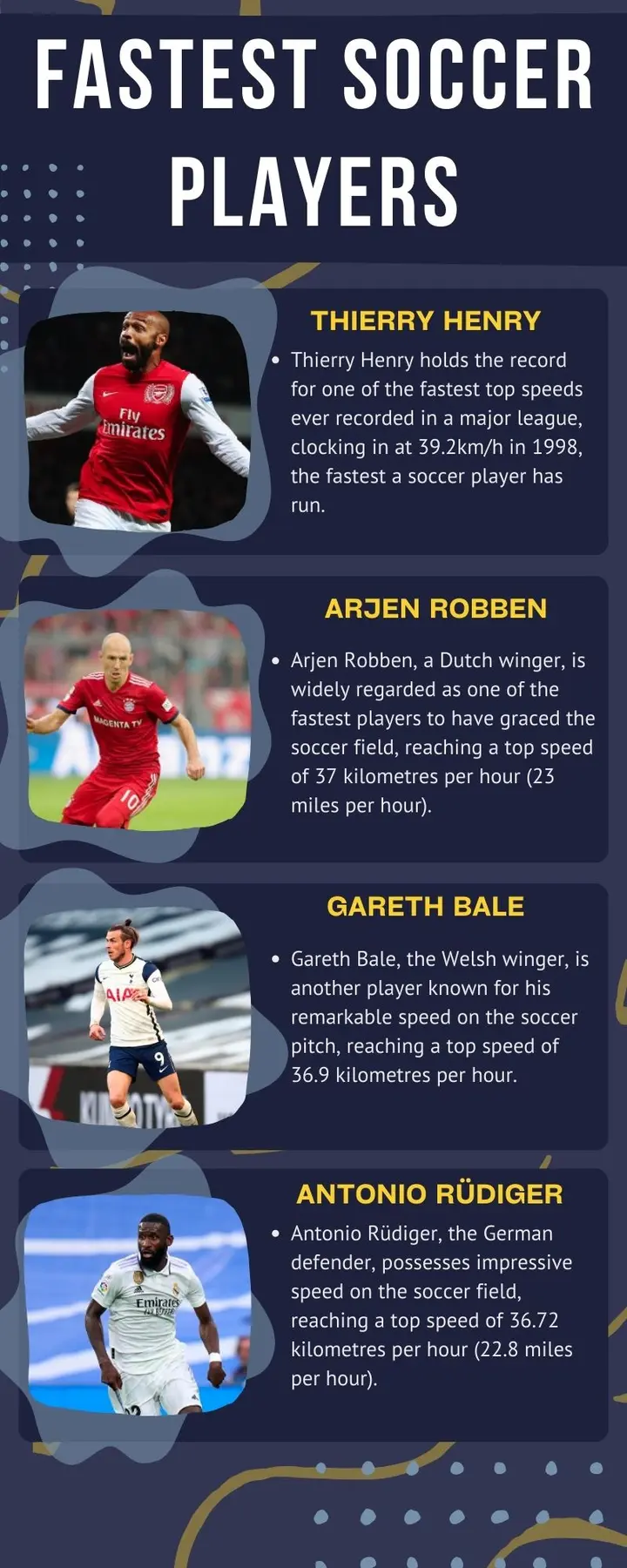
The quest for speed in soccer has always captivated fans and players. In the world of football, certain players are celebrated for their lightning-fast pace, setting remarkable speed records.
When we talk about the fastest soccer players ever, these elite athletes stand out for their extraordinary velocity and agility.
The 16 Fastest Soccer Players of All Time
Soccer history is filled with players who have demonstrated phenomenal speed on the field. Their incredible pace and technical skills have earned them legendary status.
Let’s dive into the list of the top 16 fastest soccer players and uncover who holds the title for the most blazing speed.
16. Cristiano Ronaldo – 33.95 km/h
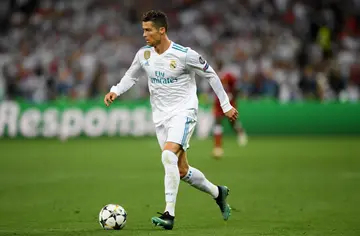
- Full name: Cristiano Ronaldo dos Santos Aveiro
- Date of birth: 5 February 1985
- Age: 39 years (as of 2024)
- Place of birth: Hospital Dr. Nélio Mendonça, Funchal, Portugal
Cristiano Ronaldo, a name synonymous with elite soccer, clocks in at a remarkable 33.95 km/h. Known for his explosive acceleration, Ronaldo has dazzled fans with his speed throughout his career with clubs like Manchester United and Real Madrid.
His ability to burst past defenders has made him one of the top fastest soccer players ever.
15. Antonio Valencia – 35.1 km/h

- Full name: Luis Antonio Valencia Mosquera
- Date of birth: 4 August 1985
- Age: 38 years (as of 2024)
- Place of birth: Nueva Loja, Ecuador
Antonio Valencia, the Ecuadorian winger, has been a notable figure in soccer for his incredible speed. With a top speed of 35.1 km/h, Valencia’s sprinting ability has been a crucial asset in both offensive and defensive situations.
His speed was particularly evident during his time at Manchester United, where he became renowned for his rapid runs down the wing.
14. Leroy Sané – 35.9 km/h
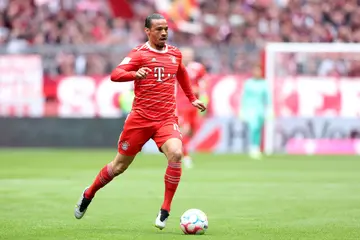
- Full name: Leroy Aziz Sané
- Date of birth: 11 January 1996
- Age: 28 years (as of 2024)
- Place of birth: Essen, Germany
Leroy Sané’s 35.9 km/h speed is a testament to his exceptional agility and acceleration. The German winger, known for his time at FC Bayern München, consistently leaves defenders in the dust.
His rapid pace allows him to create significant scoring opportunities, making him one of the most exciting players to watch.
13. Kylian Mbappé – 36 km/h

- Full name: Kylian Mbappé
- Date of birth: 20 December 1998
- Age: 25 years (as of 2024)
- Place of birth: 19th arrondissement, Paris, France
The French sensation Kylian Mbappé has taken the soccer world by storm with his astounding 36 km/h speed. Known for his blistering acceleration, Mbappé can outpace virtually any defender.
His ability to maintain such high speed over distances is a key factor in his success and reputation as one of the top fastest soccer players.
12. Ronaldo Nazário – 36.2 km/h

- Full name: Ronaldo Luís Nazário de Lima
- Date of birth: 18 September 1976
- Age: 47 years (as of 2024)
- Place of birth: Rio de Janeiro, State of Rio de Janeiro, Brazil
Ronaldo Nazário, often referred to as “El Fenomeno,” was renowned for his speed and skill. With a top speed of 36.2 km/h, the Brazilian legend’s rapid bursts left defenders struggling to keep up.
His exceptional speed, combined with his technical prowess, made him one of the most formidable attackers of his era.
11. Mohamed Salah – 36.64 km/h
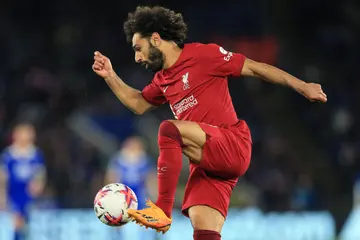
- Full name: Mohamed Salah Hamed Mahrous Ghaly
- Date of birth: 15 June 1992
- Age: 31 years (as of 2024)
- Place of birth: Nagrig, Egypt
Mohamed Salah, the Egyptian forward for Liverpool, has reached an impressive speed of 36.64 km/h. His electrifying pace is a vital component of his attacking game, allowing him to outrun defenders and capitalize on scoring opportunities.
Salah’s speed and technical ability make him a constant threat on the field.
10. Antonio Rüdiger – 36.72 km/h
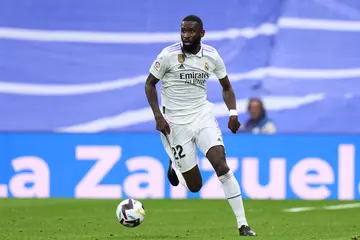
- Full name: Antonio Rüdiger
- Date of birth: 3 March 1993
- Age: 31 years (as of 2024)
- Place of birth: Berlin, Germany
Antonio Rüdiger, a German defender, showcases his impressive speed with a top speed of 36.72 km/h. His ability to accelerate quickly and cover ground efficiently has made him a valuable player for both Real Madrid and the German national team.
Rüdiger’s speed enhances his defensive capabilities, making him a key asset in crucial situations.
9. Dara O’Shea – 36.73 km/h

- Full name: Dara Joseph O’Shea
- Date of birth:4 March 1999
- Age: 25 years (as of 2024)
- Place of birth: Dublin, Ireland
Dara O’Shea, a defender for Burnley and the Republic of Ireland, boasts a top speed of 36.73 km/h. His speed allows him to keep pace with some of the Premier League’s most dynamic attackers.
O’Shea’s quickness and defensive skills have established him as a rising star in soccer.
8. Dominik Szoboszlai – 36.76 km/h

- Full name: Dominik Szoboszlai
- Date of birth: 25 October 2000
- Age: 23 years (as of 2024)
- Place of birth: Székesfehérvár, Hungary
Hungarian midfielder Dominik Szoboszlai reaches a top speed of 36.76 km/h. Playing for Liverpool and captaining the Hungarian national team, Szoboszlai’s speed is a significant asset in his versatile midfield role.
His quick bursts and agility are critical to his performance on the field.
7. Pedro Neto – 36.86 km/h

- Full name: Pedro Lomba Neto
- Date of birth: 9 March 2000
- Age: 24 years (as of 2024)
- Place of birth: Viana do Castelo, Portugal
Pedro Neto, the Portuguese winger for Wolverhampton Wanderers, has a top speed of 36.86 km/h.
Known for his rapid pace and dynamic play, Neto’s speed is a key factor in his ability to disrupt defenses and create scoring chances.
6. Gareth Bale – 36.9 km/h
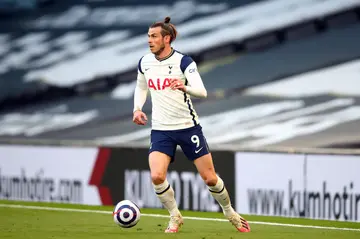
- Full name: Gareth Frank Bale
- Date of birth: 16 July 1989
- Age: 34 years (as of 2024)
- Place of birth: Cardiff, United Kingdom
Gareth Bale, the Welsh winger, achieved a top speed of 36.9 km/h. His speed has been a defining feature of his career, particularly during his time with Tottenham Hotspur and Real Madrid.
Bale’s explosive acceleration and rapid runs make him one of the fastest soccer players in history.
5. Chiedozie Ogbene – 36.93 km/h

- Full name: Chiedozie Somkelechukwu Ogbene
- Date of birth: 1 May 1997
- Age: 26 years (as of 2024)
- Place of birth: Lagos, Nigeria
Chiedozie Ogbene, known for his impressive 36.93 km/h speed, has made a name for himself with his blistering pace.
His ability to cover ground quickly and maintain high velocity makes him a standout player on the field.
4. Arjen Robben – 37 km/h
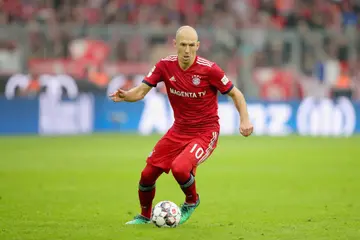
- Full name: Arjen Robben
- Date of birth: 23 January 1984
- Age: 40 years (as of 2024)
- Place of birth: Bedum, Netherlands
Arjen Robben, the Dutch winger, reached a remarkable top speed of 37 km/h. His incredible pace, combined with his technical skills, allowed him to be a constant threat to defenders.
Robben’s speed was a key factor in his success with clubs like Bayern Munich.
3. Kyle Walker – 37.31 km/h
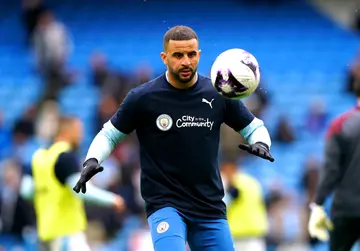
- Full name: Kyle Andrew Walker
- Date of birth: 28 May 1990
- Age: 33 years (as of 2024)
- Place of birth: Sheffield, United Kingdom
Kyle Walker, the English right-back, is known for his top speed of 37.31 km/h.
His ability to cover ground quickly and his defensive prowess make him a valuable player for both Manchester City and the England national team.
2. Micky van de Ven – 37.38 km/h

- Full name: Micky van de Ven
- Date of birth: 19 April 2001
- Age: 22 years (as of 2024)
- Place of birth: Wormer, Netherlands
Micky van de Ven, a Dutch defender, achieves an impressive speed of 37.38 km/h. His rapid pace and defensive skills make him a standout player in the sport.
Van de Ven’s speed is a significant asset in his role as a defender.
1. Thierry Henry – 39.2 km/h
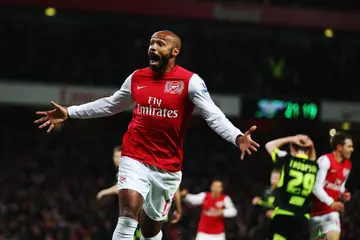
- Full name: Thierry Daniel Henry
- Date of birth: 17 August 1977
- Age: 46 years (as of 2024)
- Place of birth: Les Ulis, France
Thierry Henry, the French legend, holds the top spot with a phenomenal 39.2 km/h speed. Known for his explosive acceleration and incredible pace, Henry’s speed was a key factor in his success with Arsenal and other top clubs.
His ability to outpace defenders and create scoring opportunities solidifies his place as the fastest soccer player ever.
Conclusion
In the world of soccer, speed is a game-changer. The fastest soccer players not only entertain us with their breathtaking pace but also redefine the dynamics of the game.
From Cristiano Ronaldo’s explosive runs to Thierry Henry’s unmatched speed, these athletes have left an indelible mark on soccer history with their incredible velocity.
FAQs
1. Who is the fastest soccer player ever?
Thierry Henry holds the title of the fastest soccer player ever with a top speed of 39.2 km/h.
2. How fast is Kylian Mbappé?
Kylian Mbappé reaches a top speed of 36 km/h.
3. What is Cristiano Ronaldo’s top speed?
Cristiano Ronaldo’s top speed is 33.95 km/h.
Blog
“Real Madrid 2024-25: Mbappe’s Arrival Heralds New Era of Galácticos”

Real Madrid, the reigning European and Spanish champions, are poised to reach new heights in the 2024-25 season with the long-awaited arrival of French superstar Kylian Mbappe. The addition of the world-class forward to an already formidable squad has sent shockwaves through the footballing world and ignited fervent excitement among the Madridistas.
Carlo Ancelotti’s men, fresh off a historic Champions League and La Liga double, have somehow managed to strengthen their ranks further. The acquisition of Mbappe, widely regarded as one of the top three players globally, promises to elevate Los Blancos to unprecedented levels of dominance.
The Madrid regional government has change its income tax regulation to ease Mbappé’s arrival.https://t.co/XikmSU8qNh
— Sowhat🚻 (@LntLopez) August 15, 2024
While the integration of such a high-profile player may present initial challenges, the wealth of young talent already thriving at the Santiago Bernabeu provides a solid foundation for success. The midfield trio of Federico Valverde, Aurelien Tchouameni, and Eduardo Camavinga demonstrated remarkable growth last season and are primed to reach new heights in the coming campaign.
Ancelotti, the tactical maestro who recently extended his contract, appears to be the perfect orchestrator for this evolving side. His experience and adaptability will be crucial in harnessing the full potential of this star-studded lineup.
The mood in Madrid is electric, with fans and pundits alike anticipating a potential return to the ‘Galácticos‘ era. However, the team’s recent success suggests that this incarnation of Real Madrid may surpass even those legendary squads of the past.
As the new season approaches, all eyes will be on the Bernabeu to see if this powerhouse can live up to the immense expectations. With a blend of world-class talent, youthful exuberance, and seasoned leadership, Real Madrid seems poised to redefine footballing excellence in the 2024-25 season.
Source: CNNhttps://www.cnn.com/sports/
Soccer
Zidane’s Surprising Pick for Football’s Greatest Reignites GOAT Debate”

In a revelation that has sent shockwaves through the football world, French legend Zinedine Zidane reportedly named a player he considers superior to both himself and Lionel Messi, potentially reshaping the longstanding ‘Greatest of All Time’ (GOAT) debate.
The insight comes from former Manchester United defender Patrice Evra, who shared a private conversation with Zidane that has now thrust the GOAT discussion back into the spotlight.
While Zidane’s exact choice remains undisclosed, the mere suggestion that the 1998 World Cup winner believes there’s a player surpassing both his own legendary status and that of Messi has ignited fierce speculation and debate among fans and pundits alike.
“Zidane’s perspective carries immense weight,” says football historian Dr. Emma Thompson. “His achievements on the pitch and success as a manager give him a unique vantage point in assessing footballing greatness.”
I wonder why they say Platini is better than Zidane let me think.. Zidane single handedly won France a World Cup and a Euros and for me is the best player I’ve ever seen for over a decade and is probably in the top 5 players of all time. Did Platini win France a World Cup?
Via… pic.twitter.com/S9lyIaLatL
— Stretford Post (@StretfordPost) June 7, 2023
The GOAT debate has long been a contentious topic in football circles, with passionate arguments made for players across different eras. Pele, Diego Maradona, Cristiano Ronaldo, and Messi are often at the forefront of these discussions.
As the football community eagerly awaits more details or potential confirmation from Zidane himself, this revelation serves as a reminder of the subjective nature of greatness in sport and the enduring fascination with comparing legends across generations.
The debate rages on, with Zidane’s cryptic endorsement now a new focal point in the never-ending quest to crown football’s ultimate GOAT.
Source: www.bbc.com/sport.
-

 Blog7 months ago
Blog7 months agoTop 10 Sports Management Programs: Unlocking the Secrets
-

 Blog5 months ago
Blog5 months agoShould the Lakers Lose On Purpose? A Strategic Look at the NBA Play-In Game
-

 Sports7 months ago
Sports7 months agoTop 12 Highest-Paid Soccer Players in the World + Income!
-

 Sports7 months ago
Sports7 months agoWhat Game is Called the “Sport of Kings”? Unveiling the History and Rules
-

 Sports7 months ago
Sports7 months agoHow to Play Badminton + Badminton Rules EXPLAINED!
-
![Top 13 Serie A Scorers Of All Time! [+ History]](https://sportcasino.info/wp-content/uploads/2024/03/Screenshot-2024-04-13-at-10.40.34 PM-400x240.png)
![Top 13 Serie A Scorers Of All Time! [+ History]](https://sportcasino.info/wp-content/uploads/2024/03/Screenshot-2024-04-13-at-10.40.34 PM-80x80.png) Sports6 months ago
Sports6 months agoTop 12 Serie A Scorers Of All Time! [+ History]
-

 golf4 months ago
golf4 months agoHow Much Does the Winner of the 2024 PGA Championship Get?
-

 Rules of Sport7 months ago
Rules of Sport7 months agoAmerican Football Rules: A Comprehensive Guide + 10 Tips








